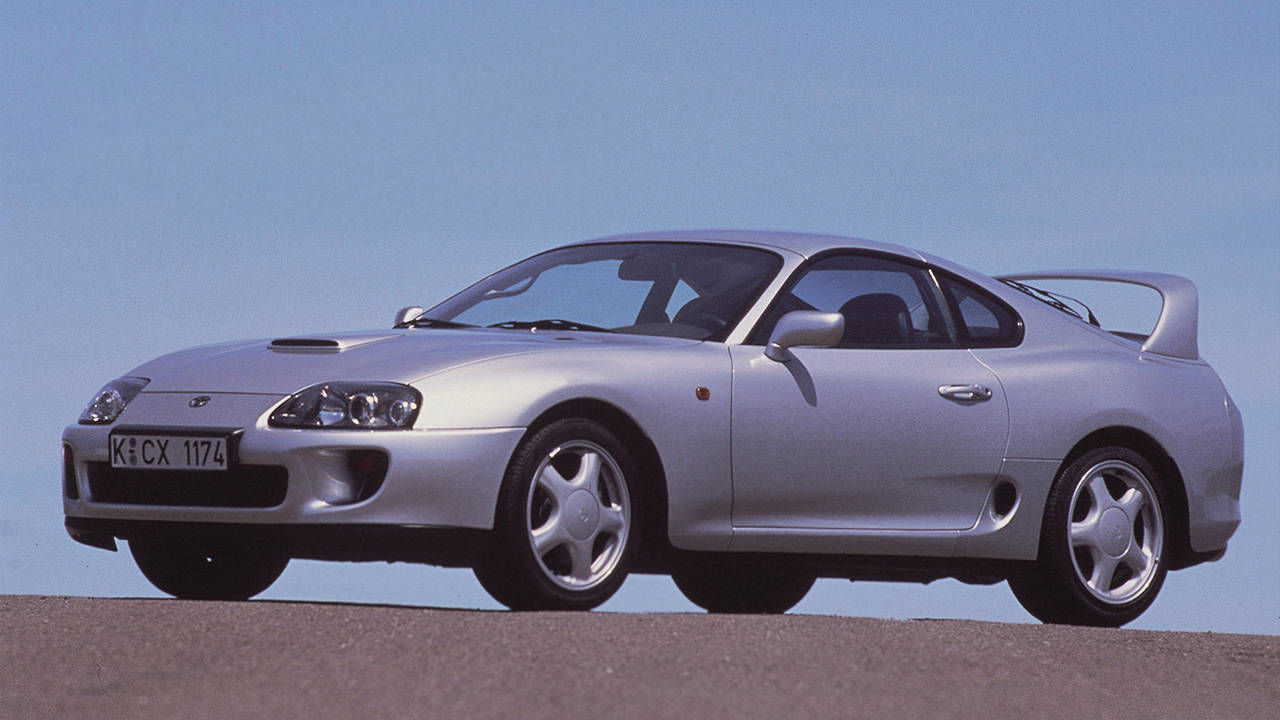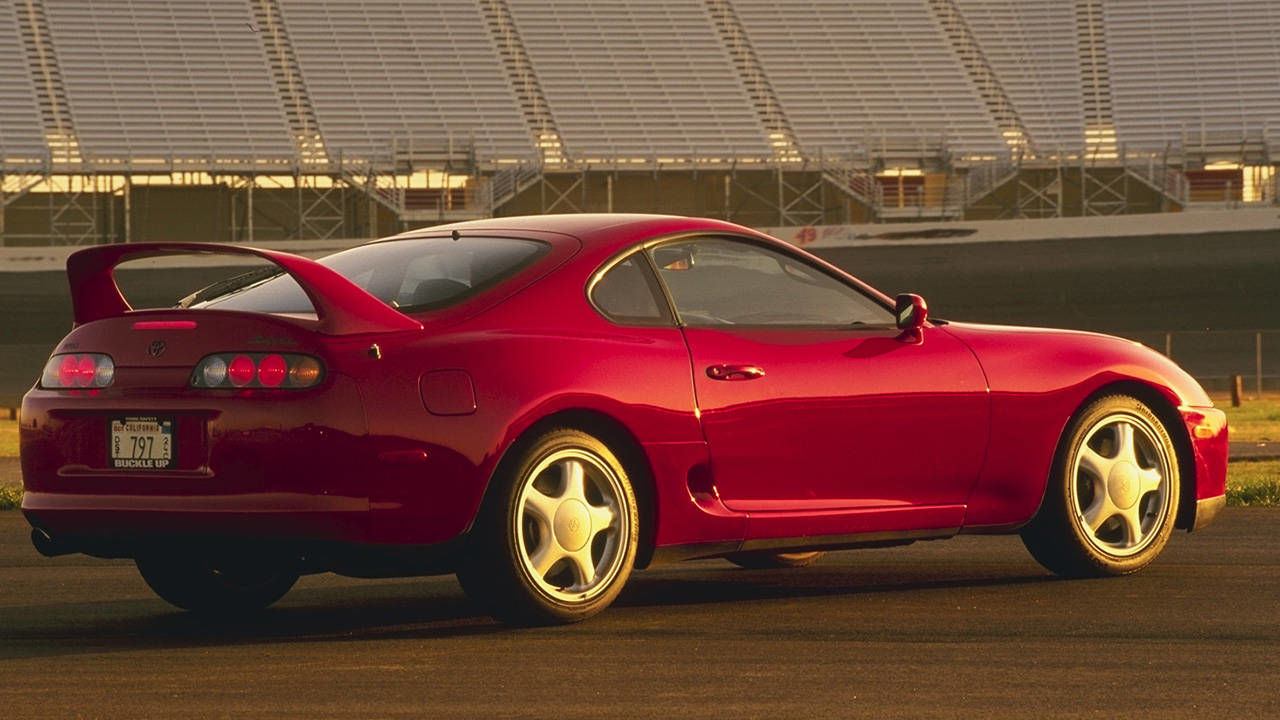Why the Supra still matters
It took Toyota just sixteen years to take the Supra nameplate from smooth cruiser to twin-turbo pavement scorcher. The first car, essentially a six-cylinder, long-nosed version of the Celica, was barely interesting, but its burly descendant was a tire-cooking hooligan.
Based on this evolutionary path, the fourth-gen Supra should be as totally outclassed today as was its grandfather in 1993. It's well over two decades old, and had progress continued at the same pace, it should be outperformed by any modern car. It's not, though, and while Toyota still builds sports cars under the Lexus brand, the Supra remains the fastest car to ever wear a Toyota badge.
Why? Well, power's a big part of the equation, and in a rarely-seen
event, Japan sent a better car to America than it made at home. The
fourth-gen Supra arrived Stateside in 1993 as a '94 model, packing 320
hp compared to the JDM car's official rating of 276 hp. The 3.0L inline
six, coded 2JZ-GE, would become a legend. It boasted massive internal
strength. Up to 800 hp was achievable through swapped turbos. Even basic
power-adding through a free-flow exhaust and more boost could net the
Supra upwards of 400 hp at the wheels.
It was also relatively lightweight, though not at the level of the Mazda
RX-7 or Honda NSX. Every effort was made to shed pounds, up to and
including carpets with hollow fibers and dished bolt heads. The
fourth-gen Supra still weighed 3200 lbs, but that marked a 10% weight
loss versus the previous car. It's also fairly compact, with a footprint
and center of gravity not far off today's Toyota 86
Braking was excellent, with four-piston calipers in front and two-piston in back. The stopping distances were unequaled by other production cars for around a decade. Handling was very good, with staggered-fitment Bridgestone Potenzas getting power to the ground. However, getting rough with the throttle when the larger turbo came on boost would still overwhelm the 255-series tires out back, making for glorious, smokey slides. Get it to stick and it'd pull 0.95 g on the skidpad.
Really, there were only two major problems. The first was the price, which was a staggering $40,000. Yes, this was a Toyota that could outperform a Corvette or a Porsche 928, but it also cost nearly as much as the Porsche. The Supra wasn't sold in the U.S. after 1998.
The second issue, which emerged later, is that most of these cars fell into the hands of the tuner crowd and were irreparably ruined. Some became dyno queens destined to make big numbers but never perform on the street, some became neon-underlit
Fast & Furious replicas, some were simply abused and blown up or crashed.A stock MK IV Supra is a rarity now, and one that can be instantly appreciated. At the zenith of the Japanese sportscar craze, it stands right next to the Honda NSX and the Mazda RX-7 as the greatest cars any of the three companies have ever built.
When the FT-1 concept was revealed in Detroit back in January, the question asked was, "Could this be the next Supra?" If and when we finally do see a fifth-generation car, it's got big boots to fill.


post edited by Ray-MR2 - 2015/07/21 23:34:17